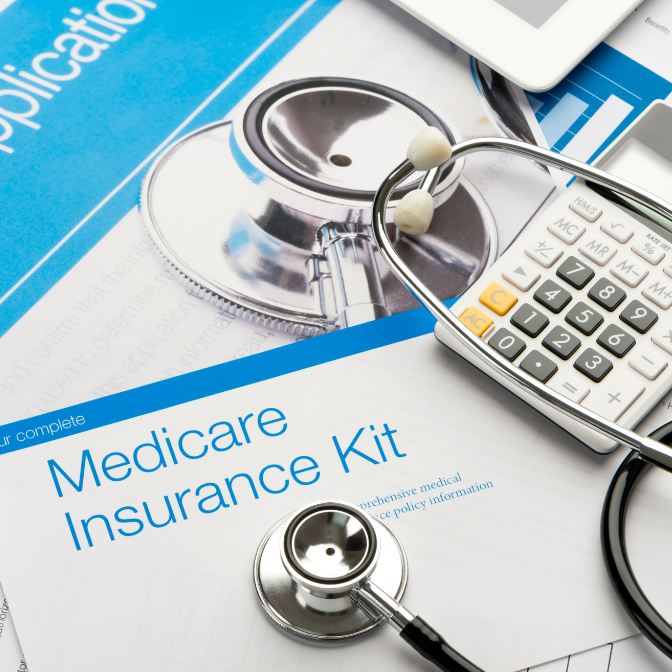Understanding Required Minimum Distributions (RMDs) in Retirement Planning
Key Takeaways:
Strategic Planning Is Key: Understand the nuances of RMDs, from calculating withdrawals to strategic conversions, to make informed decisions that align with your retirement goals.
Retirement planning is a multifaceted journey, and one of its critical elements is understanding Required Minimum Distributions (RMDs). RMDs are IRS-mandated withdrawals that individuals must make from their retirement accounts once they reach a certain age. This age, initially set at 72, has been adjusted to 73 for those who turned 72 after December 31, 2022, due to the SECURE Act.
What is the Purpose of Required Minimum Distributions?
At its core, RMDs serve a dual purpose in the realm of retirement planning. Firstly, they ensure that individuals draw down their tax-advantaged retirement accounts, such as Traditional IRAs and 401(k)s, during their retirement years. This systematic withdrawal approach aligns with the IRS’s interest in collecting taxes on these funds, which have likely grown tax-deferred over the years.
Secondly, RMDs are crucial in helping retirees manage their finances more effectively. By requiring a minimum distribution, the IRS helps prevent retirees from hoarding their retirement savings indefinitely, thereby encouraging a steady and sustainable income stream during their golden years.
Understanding the purpose of RMDs is fundamental to appreciating their role in the broader landscape of retirement planning. As individuals approach the age when RMDs come into play, it becomes paramount to delve into the intricacies of these required withdrawals.
RMD Rules: Navigating the Withdrawal Landscape
Navigating the landscape of RMD rules is essential for any retiree. The IRS stipulates that individuals must start taking RMDs from their retirement accounts by April 1st of the year following the year they turn 72 (or at age 73 if they turn 72 after December 31, 2022). For those who turned 72 before January 1, 2022, the previous rule of starting RMDs at age 72 still applies.
The calculation of RMDs involves determining the account balance as of December 31st of the previous year and dividing it by the applicable distribution period based on your age. While this might sound straightforward, it’s essential to consider all your retirement accounts and apply the formula to each. This is where the importance of an RMD calculator comes into play.
How to Calculate Required Minimum Distributions
The calculation of RMDs requires attention to detail, and understanding the process is crucial for retirees. The formula involves taking the account balance as of December 31st of the prior year and dividing it by the distribution period based on the retiree’s age.
For example, if your IRA balance is $500,000 and you’re 75 years old, your RMD would be approximately $20,833 ($500,000 ÷ 24). It’s important to note that the IRS provides tables to simplify this process, but the responsibility ultimately falls on the retiree to ensure compliance.
An RMD calculator can streamline this process, allowing retirees to input their account details and receive an accurate calculation of their required minimum distribution. This tool is invaluable for retirees seeking to plan their financial future with precision.
Can RMDs Be Reinvested?
A common question arises concerning the reinvestment of RMDs. Once withdrawn, can these funds be reinvested or must they be used for living expenses? The answer lies in the purpose of RMDs. The IRS mandates these withdrawals to ensure that retirees draw down their retirement savings and pay taxes on these funds. Therefore, RMDs are not designed for reinvestment; they are meant to be withdrawn and utilized for living expenses or other financial needs.
Understanding the purpose and limitations of RMDs is crucial for retirees as they plan their withdrawal strategy. While the funds may not be reinvested within a tax-advantaged retirement account, retirees have the flexibility to manage their RMDs in a way that aligns with their financial goals.
IRA Distribution Rules and Exceptions
Individual Retirement Accounts (IRAs) are common sources subject to RMD rules. Whether you hold a Traditional IRA or a Roth IRA, it’s essential to be aware of IRA distribution rules and any exceptions that might apply to your situation.
Early Retirement and RMDs
Retiring before the age when RMDs kick in adds complexity to your withdrawal strategy. Many individuals are opting for early retirement, seeking financial independence and flexibility. However, understanding how early retirement intersects with RMDs is crucial for effective retirement planning.
Early retirees often wonder about the implications of RMDs on their financial strategy. Fortunately, the IRS generally does not impose penalties for early retirees taking withdrawals from their retirement accounts. This flexibility allows early retirees to access their funds when needed without facing punitive measures.
However, it’s essential to note that once RMDs commence, retirees must adhere to the established distribution schedule to avoid penalties. This transition period requires careful consideration of how early retirement impacts RMD planning, ensuring a smooth financial transition into the mandatory withdrawal phase.
Roth IRA RMD Rules
Roth IRAs, known for their tax-free withdrawals, have different RMD rules compared to Traditional IRAs. Roth IRAs do not mandate withdrawals during the account owner’s lifetime, making them an attractive option for those seeking flexibility in managing their retirement income.
The absence of RMD requirements for Roth IRAs gives retirees greater control over their withdrawals. This flexibility allows for strategic financial planning, enabling retirees to optimize their income streams without the constraints of mandatory distributions.
However, it’s crucial to delve into the nuances of inherited Roth IRAs. While the original account owner enjoys the freedom of not having to take RMDs, beneficiaries inheriting Roth IRAs must navigate a different set of rules. Inherited Roth IRAs are subject to specific distribution requirements, necessitating a nuanced approach to RMD planning for heirs.
Strategies to Minimize RMDs: A Closer Look
As retirees explore the landscape of RMDs, strategies to minimize their impact on retirement income become paramount. One effective approach is converting traditional IRAs to Roth IRAs.
Converting Traditional IRAs to Roth IRAs
Converting a traditional IRA to a Roth IRA involves paying taxes on the converted amount but can offer long-term tax benefits. Retirees can potentially reduce future RMDs by making this strategic move, as Roth IRAs are not subject to these requirements during the owner’s lifetime.
The decision to convert a traditional IRA to a Roth IRA requires careful consideration of current and future tax implications. Retirees must weigh the upfront tax cost against the potential long-term benefits of tax-free withdrawals and the elimination of RMDs for themselves and their heirs.
Optimizing Withdrawal Strategies
Another consideration in minimizing RMDs involves optimizing withdrawal strategies. Retirees can strategically plan their withdrawals by spreading them across multiple years. This approach allows for better control over taxable income, potentially reducing the impact of RMDs on tax liabilities.
Qualified Charitable Distributions (QCDs) offer another avenue for optimizing withdrawal strategies. By directing RMDs to qualified charities, retirees can fulfill their RMD requirements while potentially reducing their taxable income. This not only benefits charitable causes but also allows retirees to manage their tax liabilities more efficiently.
Impact of RMD on Social Security Benefits
The relationship between RMDs and other components of retirement income, such as Social Security benefits, is a critical consideration for retirees.
How RMDs Impact Social Security Benefits
RMDs can influence the taxation of Social Security benefits. When RMDs push a retiree’s income higher, a portion of their Social Security benefits may become subject to taxation. Understanding the interplay between RMDs and Social Security is crucial for optimizing overall retirement income.
Retirees need to be mindful of the combined income calculation, including adjusted gross income (AGI), nontaxable interest, and half of Social Security benefits. As this combined income surpasses certain thresholds, a portion of Social Security benefits becomes taxable.
Strategically managing RMDs in conjunction with Social Security benefits can help retirees minimize their tax liabilities and maximize their after-tax income during retirement. This nuanced approach requires a comprehensive understanding of the tax implications associated with both RMDs and Social Security.
Exceptions to RMD Rules: What You Need to Know
While RMD rules generally apply uniformly, there are exceptions that retirees should be aware of. The SECURE Act 2.0, enacted in 2022, introduced changes to RMD rules, impacting both account owners and beneficiaries.
How Does the SECURE Act Affect RMDs?
The SECURE Act brought about significant changes to retirement planning, with specific implications for RMDs. One notable change was the increase in the RMD age from 72 to 73 for those who turned 72 after December 31, 2022.
This extension provides individuals with more time before they are required to start taking withdrawals from their retirement accounts. The shift in the RMD age aligns with the increasing life expectancy of the population and aims to accommodate longer working years and delayed retirements.
Another noteworthy change introduced by the SECURE Act is eliminating the age limit for traditional IRA contributions. Before this legislation, individuals were prohibited from contributing to traditional IRAs once they reached the age of 72. With the removal of this age restriction, older individuals now have the flexibility to continue contributing to their traditional IRAs as long as they have earned income.
Understanding these changes is crucial for retirees as they navigate the evolving landscape of RMDs and retirement planning. The SECURE Act’s provisions have implications for both current account owners and beneficiaries, shaping how individuals approach their retirement income strategy.
Conclusion
In conclusion, Required Minimum Distributions (RMDs) are a cornerstone of retirement planning, designed to ensure a systematic drawdown of tax-advantaged retirement accounts. As individuals approach the age when RMDs come into play, a comprehensive understanding of the rules, exceptions, and strategies becomes paramount.
Retirees should not view RMDs in isolation but rather as part of a broader retirement income strategy. Individuals can make informed decisions that align with their financial goals by delving into the intricacies of RMD rules, exploring effective strategies to minimize their impact, and staying informed about exceptions such as those introduced by the SECURE Act.
As with any aspect of retirement planning, seeking professional financial advice is recommended. Financial advisors can provide personalized guidance based on an individual’s unique circumstances, helping retirees navigate the complexities of RMDs and optimize their retirement income for a financially secure future.
SECURE Your Future: Stay informed about legislative changes like the SECURE Act, which not only alters RMD ages but introduces opportunities for continued contributions, shaping the landscape of retirement planning.
Recent Articles
Get the FREE E-Book

At Certified Safe Money, we empower you with valuable resources to make informed decisions for your retirement goals. We believe knowledge is the key to unlocking a secure future. Explore our current e-books and equip yourself with the insights you need to plan for the retirement you deserve.
At Certified Safe Money, we empower you with valuable resources to make informed decisions for
Are you a Safe Money or Retirement expert? Apply for a free listing!
Are you a Safe Money or Retirement expert? Apply for a free listing!
Find The Most Credible,
Highest-Rated Safe Money Advisors
If You Are Nearing Retirement Or Already Retired, Finding The Right Financial Advisor Who Fits Your Needs Doesn’t Have To Be Complicated.
Our Free Tool Matches You With The Highest-Rated Financial Advisors In Your Area.
Featured Articles
Key Takeaways: Understanding the various parts and options of Medicare is crucial for retirees to make informed decisions about their healthcare coverage. Medicare Advantage plans
Key Takeaways: Maximizing contributions to tax-advantaged retirement accounts and considering Roth IRA conversions can provide valuable tax benefits and flexibility in retirement planning. Optimizing investment
Key Takeaways: Understanding your financial needs and goals is essential when choosing a life insurance policy. Different types of life insurance policies offer varying features,








